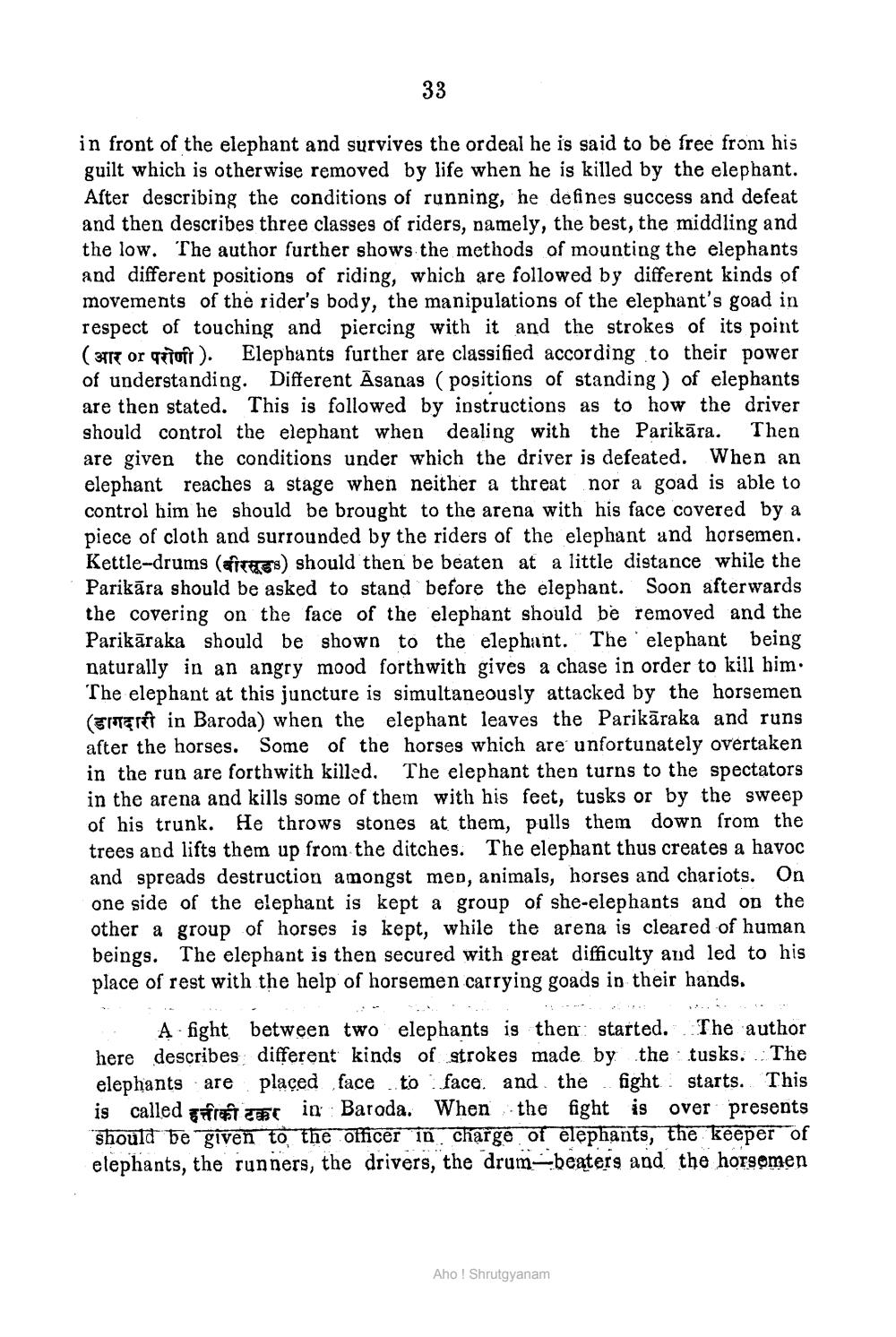________________
33
in front of the elephant and survives the ordeal he is said to be free from his guilt which is otherwise removed by life when he is killed by the elephant. Aster describing the conditions of running, he defines success and defeat and then describes three classes of riders, namely, the best, the middling and the low. The author further shows the methods of mounting the elephants and different positions of riding, which are followed by different kinds of movements of the rider's body, the manipulations of the elephant's goad in respect of touching and piercing with it and the strokes of its point ( 317 or ortofr ). Elephants further are classified according to their power of understanding. Different Asanas (positions of standing of elephants are then stated. This is followed by instructions as to how the driver should control the elephant when dealing with the Parikāra. Then are given the conditions under which the driver is defeated. When an elephant reaches a stage when neither a threat nor a goad is able to control him he should be brought to the arena with his face covered by a piece of cloth and surrounded by the riders of the elephant and horsemen. Kettle-drums (ITE) should then be beaten at a little distance while the Parikāra should be asked to stand before the elephant. Soon afterwards the covering on the face of the elephant should be removed and the Parikāraka should be shown to the elephant. The elephant being naturally in an angry mood forthwith gives a chase in order to kill him. The elephant at this juncture is simultaneously attacked by the horsemen (Tmert in Baroda) when the elephant leaves the Parikāraka and runs after the horses. Some of the horses which are unfortunately overtaken in the run are forthwith killed. The elephant then turns to the spectators in the arena and kills some of them with his feet, tusks or by the sweep of his trunk. He throws stones at them, pulls them down from the trees and lifts them up from the ditches. The elephant thus creates a havoc and spreads destruction amongst men, animals, horses and chariots. On one side of the elephant is kept a group of she-elephants and on the other a group of horses is kept, while the arena is cleared of human beings. The elephant is then secured with great difficulty and led to his place of rest with the help of horsemen carrying goads in their hands.
US,
A fight between two elephants is then started. The author here describes different kinds of strokes made by the tusks. The elephants are placed face to face and the fight starts. This is called free in Baroda. When the fight is over presents should be given to the officer in charge of elephants, the Keeper of elephants, the runners, the drivers, the drum-beaters and the horsomen
Aho ! Shrutgyanam




